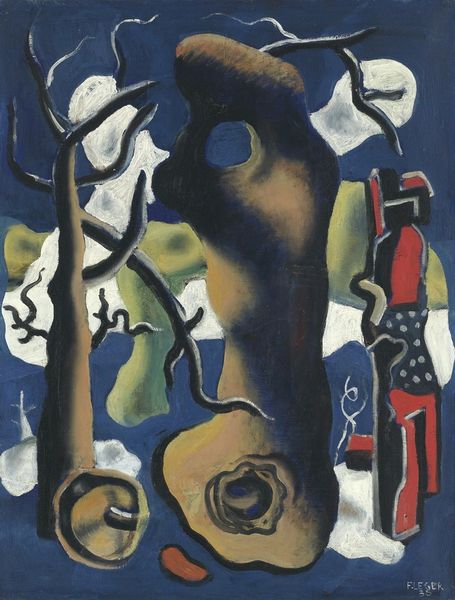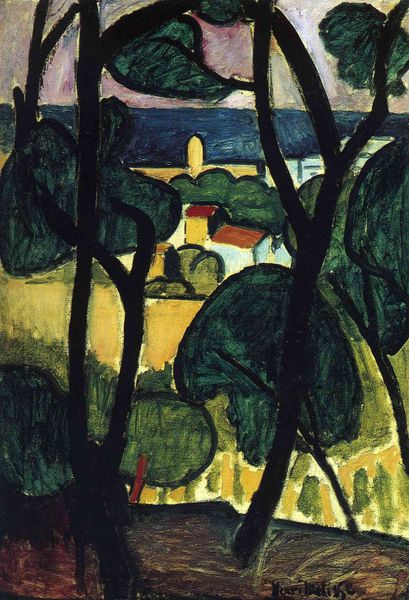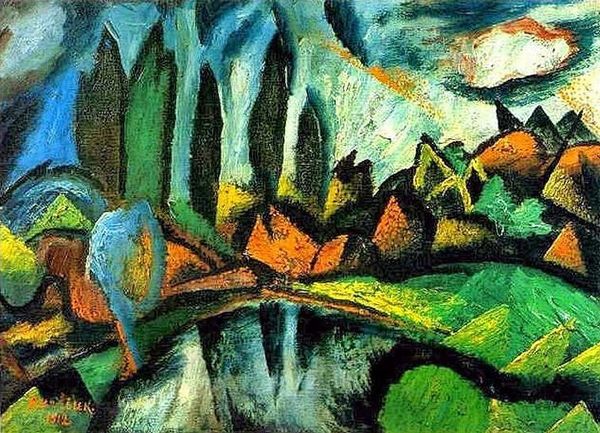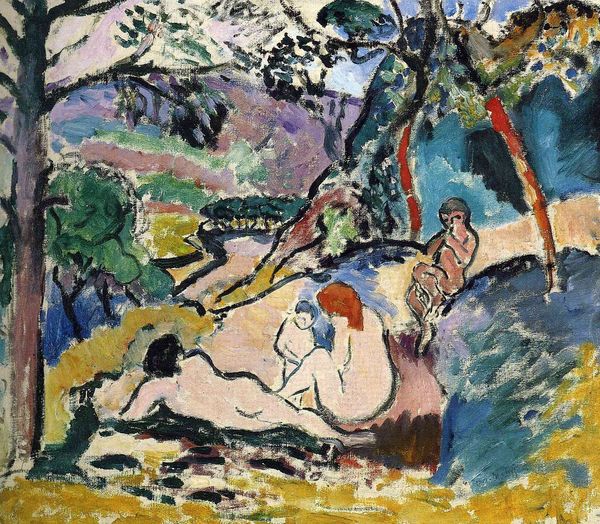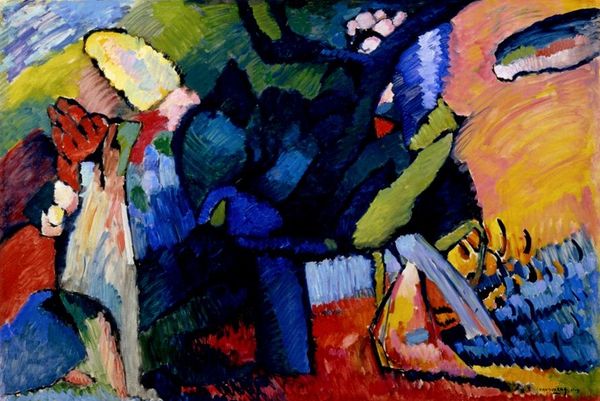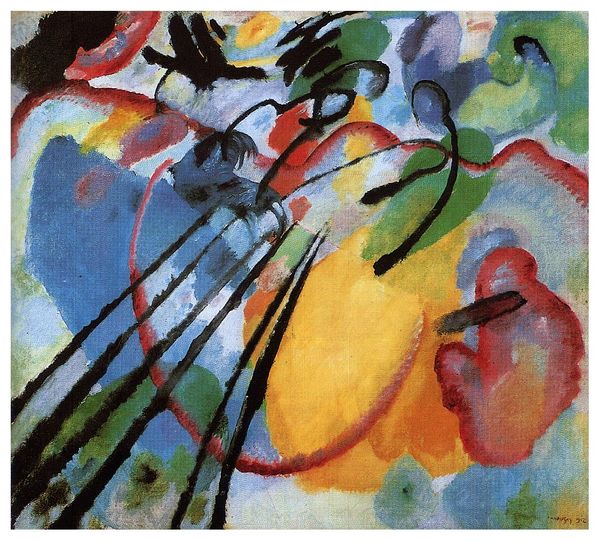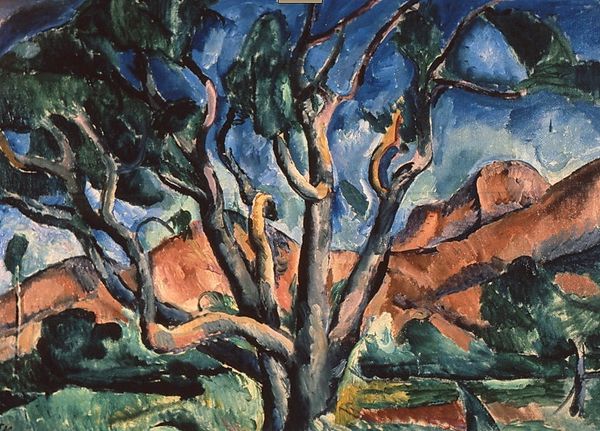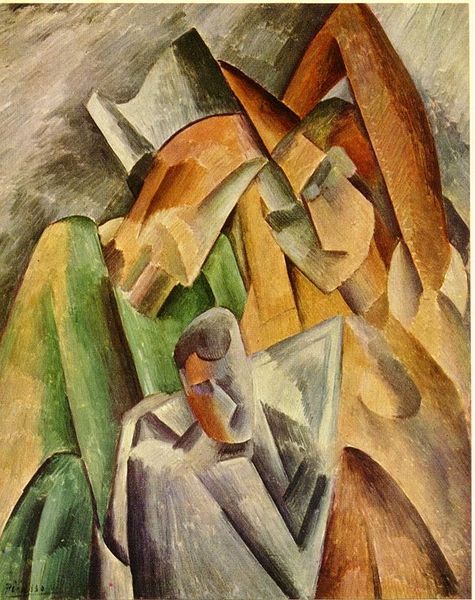
Copyright: Public domain US
Editor: This is Henri Matisse’s "Garden at Issy" from 1917, painted with oil paints, it seems, in an outdoor setting. The earthy color palette almost drains the vibrancy out of what I would expect a garden scene to be. What stands out to you the most, looking at it through a formalist lens? Curator: Immediately, I note the dynamic tension between the planar composition and the illusion of depth. Consider the arrangement of forms: circular shapes interacting with rectilinear elements. Does this interaction suggest to you a tension or harmony, and how is that conveyed through the arrangement of shapes? Editor: It's more tension for sure, or maybe struggle? The circle that could represent an enormous tree and its shadow seems to struggle to coexist with the house. I find myself unsure how to view those elements separately and how they fit into the larger whole of the work. Curator: Precisely. Notice how the color reinforces this. The browns and greens create a dialogue between mass and void, light and shadow. Do you observe a pattern in the impasto application, and what might that tactility communicate regarding the artist’s process or intent? Editor: Now that you point it out, the impasto seems much heavier on the left side of the piece where the mass of greenery struggles with some internal white stripes; there, I see, perhaps, a plant struggling with disease. And so that heavy texture adds more physical heft and perhaps emphasizes disease and pain. Curator: A very insightful interpretation. Considering the planar composition and tactile materiality, we see Matisse working at the intersection of representation and abstraction. The "Garden at Issy" invites a very close and slow viewing to unravel these relations. Editor: Right. By focusing on the shapes and textures, it helps bring a sense of order. Now I have more vocabulary to approach this painting.
Comments
No comments
Be the first to comment and join the conversation on the ultimate creative platform.
